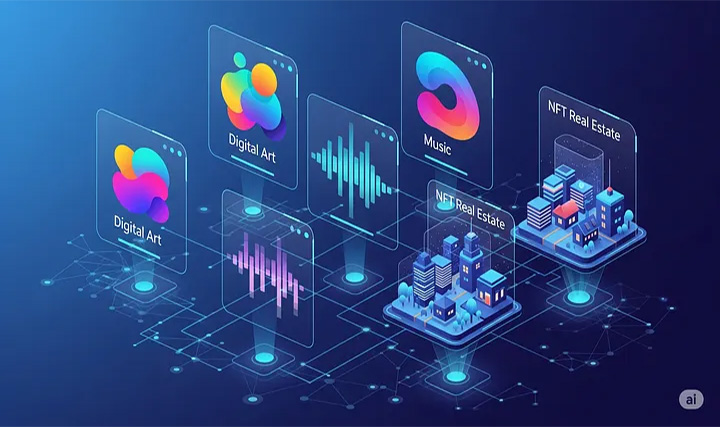🧩 What Are NFTs, Really?
Throughout this series, we’ve walked through the building blocks of the crypto universe. We explored what blockchains are, how consensus works, the role of smart contracts, and how DeFi is reshaping financial systems. In this final installment of “Crypto Concepts Demystified,” we turn to a topic that has captivated public imagination like no other: NFTs — Non-Fungible Tokens.
At their core, NFTs are unique digital tokens that represent ownership of distinct items or pieces of data on the blockchain. Unlike cryptocurrencies, where each unit is identical (one HYDRA is always equal to another HYDRA), NFTs are non-interchangeable. They can represent digital art, music, virtual real estate, in-game assets, or even credentials like diplomas and certifications.
⚡ Why Hydra Changes the NFT Game
The true innovation of NFTs lies in their ability to provide verifiable, portable, and programmable ownership. Smart contracts linked to NFTs can automate royalties, enforce usage rights, or bundle exclusive benefits — all without intermediaries.
But existing blockchains have throttled NFT adoption. Ethereum, the most popular NFT platform, is often bogged down by high gas fees, slow confirmation times, and limited scalability.
Hydra Chain changes the narrative.
Hydra achieves sub-second finality and average 0.4-second block times, making NFT transactions — mints, transfers, and sales — virtually instant. This upgrade massively improves the user experience for both creators and collectors. Platforms like HydraTools already showcase this performance, delivering a fast, cost-efficient NFT marketplace built directly on Hydra’s mainnet.
🛠 Seamless Deployment for Builders
Hydra’s full EVM compatibility enables developers to use familiar tools such as Solidity, Metamask, and OpenZeppelin libraries. This allows for easy deployment or migration from Ethereum to Hydra with minimal friction.
Additionally, Hydra offers ultra-low transaction fees — as little as $0.000021. This opens the door for artists to mint entire collections without budget concerns and for developers to build complex gaming economies or collectible ecosystems with scalable economics.
Hydra’s advanced staking model also unlocks powerful incentive structures. NFT projects can reward holders with increased staking yields or vesting bonuses, integrating loyalty directly into the protocol’s economic engine.
Decentralization is preserved through Hydra’s permissionless validator system and its unique exponentiating formula, which minimizes the risk of validator centralization — a critical concern for NFT metadata permanence and overall network trust.
And with support for account-level sharding on the horizon, Hydra is poised to handle massive on-chain data loads. This will be vital for NFT-heavy ecosystems needing thousands or even millions of tokenized assets.
🧭 Final Thoughts
NFTs are far more than a passing trend — they represent a transformative model for digital ownership. And while many chains support NFT functionality, Hydra Chain stands apart by offering the performance, affordability, and scalability needed to make NFTs work at global scale.
Thank you for joining us on this journey through the “Crypto Concepts Demystified” series. We’ve peeled back the layers on foundational crypto technologies, always spotlighting how Hydra redefines each one.
Be on the lookout for our next series, where we’ll dive into the evolution of digital money — and explore the pivotal role Hydra could play in shaping the financial systems of tomorrow.


